The United States may not have the oldest buildings in the world, but we have our share of great historic homes and mansions—the habitats of presidents, heroes and heroines, bad guys and business tycoons.
Surround yourself with unimaginable luxury. Re-live famous moments or fearful events. Whether you’re an American history buff, romantic sightseer or reluctant student, touring any of these “Eight Great U.S. Historic Homes” while in their cities is worth the time.
Several are obvious choices that may be known to all. Others are less famous. Either way, you’ll learn the secrets of these great national treasures…and maybe even be able to sleep in one.
The House of Seven Gables – Salem, Massachusetts
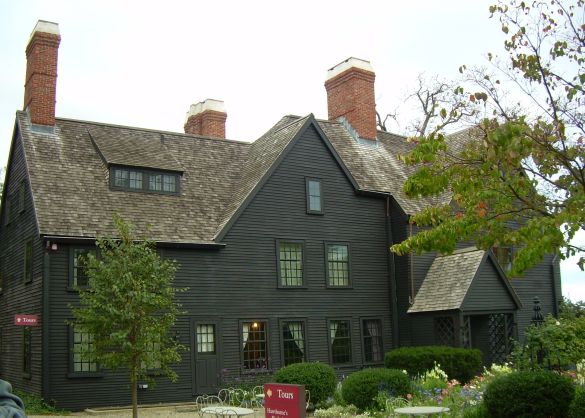
Some people think the House of Seven Gables is a fictional house in an 1851 novel by the same name. But it was for a time the real home of the book’s author, Nathaniel Hawthorne, born there in 1804. He based the book upon his experiences living in the house. Its proper name is the Turner-Ingersoll Mansion.
Nestled outside the “witch town” area of Salem, the House of Seven Gables consists of five structures built between 1655 and 1830, including Hawthorne’s birth house. They still exhibit all three centuries of architecture. The mansion itself was once put up for auction in 1782 and sold for only 500 pounds…the American equivalent of about $300 today.
You’ll tour several buildings including the mansion, and learn the history of the seven gables that came from many additions made to the main house.
Philanthropist Caroline Emmerton bought the house in 1908 as a halfway house for immigrants arriving in Salem. The estate’s main purpose is still to serve the community – offering education and activities for children and youth including summer camp and after-school programs.
The House of Seven Gables’ entire property is a National Historic Landmark District and a must-see when visiting Salem.
>> Look for travel deals to Massachusetts
Of course, you’re not going to leave the Salem area without experiencing the eerie witch trial period:
The Witch House (aka The Jonathan Corwin House) – Salem, Massachusetts
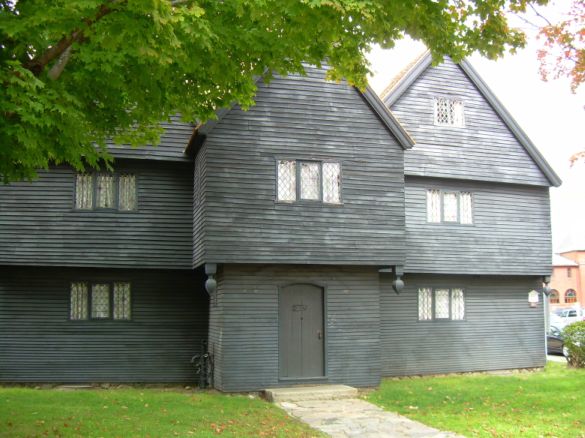
Built in 1675, this is the home of Witch Trial Judge Jonathan Corwin—the only original house standing from a main historical figure of that frightening year, 1692. Every room, with authentic floors, period furniture and trappings, can be toured. It’s just down the street from the Old Town Hall and the memorial cemetery dedicated to the innocent people who were executed.
Corwin, the local magistrate who gained infamy by ruling over the trials of all nineteen victims, lived here for forty years. The home remained in his family for nearly two centuries.
Tours take place from May through November, with special “bewitching” events near Halloween.
>> Book a hotel in Massachusetts
Thomas Jefferson’s Monticello – Charlottesville, Virginia
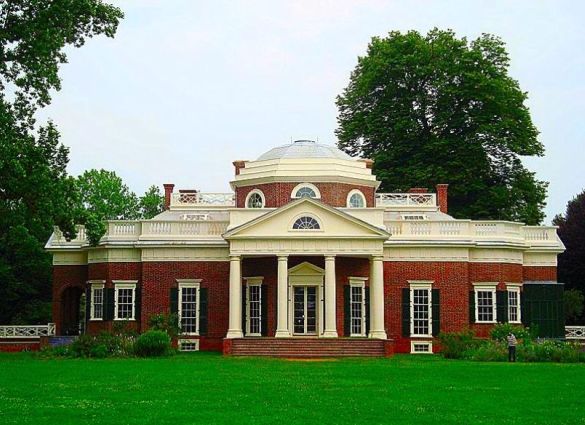
Thomas Jefferson, the third President of the United States, designed this plantation mansion as his own Virginia home, and later co-designed the White House with architect Benjamin Latrobe.
Jefferson started construction on Monticello in 1769, and moved in to one section only a year later. But it wasn’t until he returned from years of duty in Europe that he added the Roman Neo-classic features for which the home is most photographed. From 1796-1809, parts of Monticello were torn down so new features could be installed.
Monticello is also historically significant for Jefferson’s ingenuity. Tourists learn of things he invented that never appeared in a colonial home before. He was a man of many “firsts” – the first to install indoor toilets anywhere in the colonies, a dome ceiling with blown glass from Austria, and an innovative alcove for his bed; although it is probably a myth that the bed raised and lowered. He was even the first to introduce tomatoes to the American dinner table.
But Monticello has an infamous claim to fame: While applauded for his design, Jefferson is at the same time criticized for continuing to run this plantation on the sweat of slavery even after writing the Declaration of Independence. The plantation was built for an unknown sum by both white mason workers and slave labor. The upkeep and day-to-day manual tasks on Southern plantations was done almost entirely done by slaves. As a National Historic Landmark, this property is considered priceless.
Point of Honor – Lynchburg, Virginia
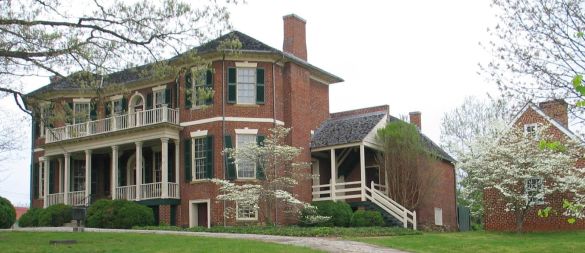
Point of Honor was built in 1815 as the home of Dr. George Cabell, physician to American Revolution patriot Patrick Henry and a known friend of Thomas Jefferson. This federal-style home, offset on a private hill, gets its name from the stories of men fighting sword or gun duels for honor on the property.
Point of Honor passed from the Cabell family to Judge William Daniel of the Virginia Court of Appeals in 1839. During the Civil War, it was the home of Robert Owen, president of the Virginia and Tennessee Railroad. His son became Oklahoma’s first State Senator.
Tours of the home and property are available, along with a gallery museum and gift shop with period memorabilia.
The John and Mable Ringling Mansion – Sarasota, Florida

In the early 1920’s, John Ringling was already a multi-millionaire—the thirteenth richest man in America—by Ringling Brothers/Barnum & Bailey Circus fame. He and his wife Mable visited Italy, fell in love with the palatial Venetian villas, and decided to fashion a Florida home in that style. They named it Ca d’Zan – Italian for House of John.
Tours of this home leave the visitor gasping at its outer beauty and inner decor. At the rear is a private dock, with expansive marble decks, which Ringling built to take boats from the Sarasota area across Tampa Bay.
Mable Ringling spent untold amounts to have furniture, artwork and artifacts from various eras shipped from Europe to Florida. Construction of the Sarasota mansion in 1924-1925 cost $1.5 million. It is estimated to cost well over $80 million to duplicate today.
The Ringling Mansion is part of a U.S. Historical Site Complex, including the Ringling Circus Museum and the Ringling Art Museum—a masterpiece in its own right—housing a world-renowned collection of art by history’s most famous artists.
>> Read our Florida travel guide
In the mood for something a little more down-to-earth while in Florida? Try this one…
The Marjorie Kinnan Rawlings House – Cross Creek, Florida

About three hours north of Sarasota, Cross Creek was the home of Pulitzer Prize-winning author Marjorie Kinnan Rawlings. She wrote her winning book, The Yearling, while living in this house. The novel has twice hit the silver screen as a movie (1946 and 1994). Rawlings herself was the subject of the 1983 film Cross Creek starring actress Mary Steenburgen.
Rawling’s house and property are now a Florida Historic State Park, but still off-the-beaten-path for most tourists. So you could be in on the secret…Rawlings also used the town’s name, “Cross Creek,” as the title of her scathingly scandalous memoirs about the town and its people. Some even tried to stop the book from being printed.
In contrast to the Ringling mansion, Rawling’s humble abode for over 25 years was this little four or five room “cracker style” house and working farm. The tour gives visitors an amazing look at her typical Florida agricultural-style living in the 1930’s, 40’s and 50’s, complete with a remaining servants’ dwelling. The house is maintained just as Rawlings left it with furnishings and amenities circa the World War II era. You’ll stop in each room to hear its story. Period costumes are worn by guides from October through July.
>> Find flights to Florida
The Burn Bed and Breakfast – Natchez, Mississippi

There are plantation mansions more imposing than the Burn in Natchez, but few as interesting. Built in 1834, The Burn was home to the John Walworth family for 100 years. Walworth was a mayor of Natchez. The family had to leave the home for three years during the Civil War when it was seized for use as a Union troop headquarters, hospital and soldier training area.
One of Walworth’s sons was in Congress when Mississippi seceded from the Union. He didn’t want to vote “yes” to secession, but wanted the vote to be unanimous so went along. A book has been written about the family’s history and their time in this home—Louise Willbourn Collier’s Pilgrimage: A Tale of Old Natchez. Collier is a Walworth descendant.
During the War, horses and other animals were kept in the bottom level of the house. According to the current owners, an old window sill still exists where a horse apparently began chewing through. Hanging in the house is a picture with a familiar-looking bearded man in Union uniform standing on the front steps – assumed to be Ulysses S. Grant.
The Burn is currently a Bed and Breakfast offering five guestrooms. Some are in the old soldiers’ quarters. The home is furnished with pieces dating 1800-1850’s, including a dining room table supposed to be the original. The Burn is also featured, along with its magnificent neighboring mansions, on the Natchez Spring and Fall Pilgrimage of Homes.
>> Find a hotel in Mississippi
Hearst Castle – San Simeon, California
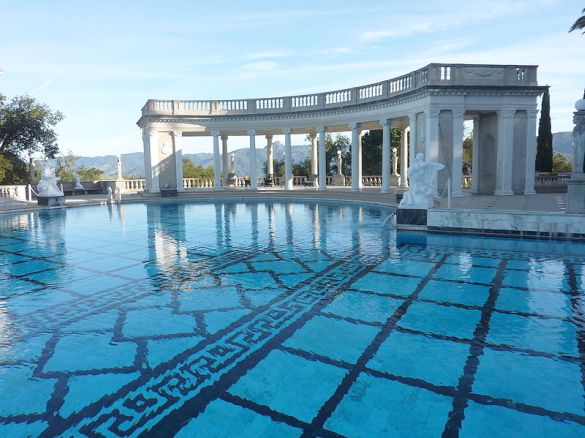
William Randolph Hearst, a born Californian, became famous as a newspaper tycoon. He was educated in journalism at Harvard, where he ran the school paper; but his father George Hearst actually won their first newspaper as payment for a gambling debt. W.R. eventually took over the San Francisco Examiner, from there built the newspaper empire, and then gained influence in Hollywood.
Like Jefferson and the Ringlings, Hearst visited Europe, desired to build a castle-like house from what he saw, and had a penchant for things from other places and eras. He built the home on land that had been in the family since 1865, employing architect Julia Morgan. Beginning in 1919, the huge castle went through various construction stages through 1947.
The Hearst Castle has a world-famous art and artifact collection. It’s now known as The Hearst San Simeon State Historical Monument. At 90,000 square feet Hearst Castle is among the largest house-museums in the U.S.
Read more about visiting famous people’s homes:
- Five Writers Homes for Literary Vacations
- 7 Famous People’s Homes Turned Museums
- Celebrity Homes in Hawaii
Photo of Point of Honor courtesy of Gregory Krueger, Curator, Lynchburg Museum System, photo of The Burn courtesy of Mrs. Bridget Green, Hearst Castle from Wikipedia Creative Commons, Monticello from Wikipedia Creative Commons, all other photos courtesy of the author and may not be used without permission.